imppick¶
Command-line call¶
imppick [-h] [-xd] [-yd] fn
Positional Arguments¶
fn |
The file to process |
Named Arguments¶
-xd |
Use kilometers for the x-axis |
-yd |
Use depth in meters (or elevation if elevation-corrected) for the y-axis |
After calling imppick to bring up the GUI, things should be pretty intuitive, but navigation may seem a bit odd at first. Here is the basic view of the picker on a Mac:
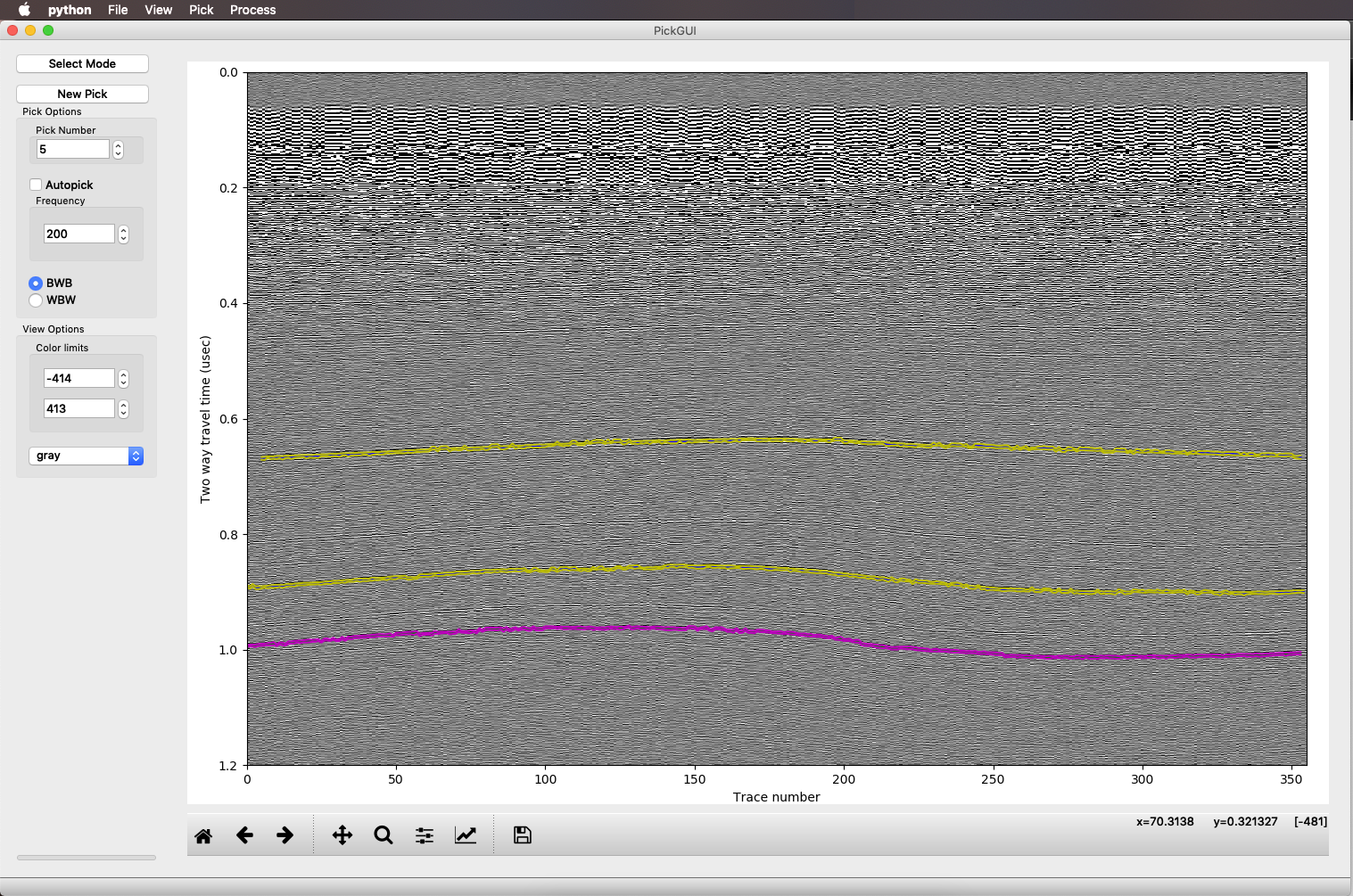
In this profile, I’ve picked some layers already. The active pick is highlighted in magenta (or rather the top and bottom of the packet are in magenta, and the middle of the packet is green, but the middle is not visible at this zoom). Other picks are in yellow, surrounding a blue central peak. On the left side are most of the controls for when do the picking. We’ll go through the buttons on the left, from top to bottom, to get an idea of how picking proceeds.
Workflow¶
Load intersections¶
Once the profile is loaded, before doing any picking or numbering, you likely want to have the context of any other profiles that you have already picked. This is done through pick > load crossprofile. Loading the intersections should give you a string of pearls with pick numbers in each, with the dots located at where the other profile hits this one. The loading is pretty dumb, so if you have multiple intersections only the one where the traces in the two profiles are closest will load. Eventually this might become more clever, but the current implementation covers most use cases. You can load multiple profiles, so if you are really having a need for multiple intersections, just split the other file.
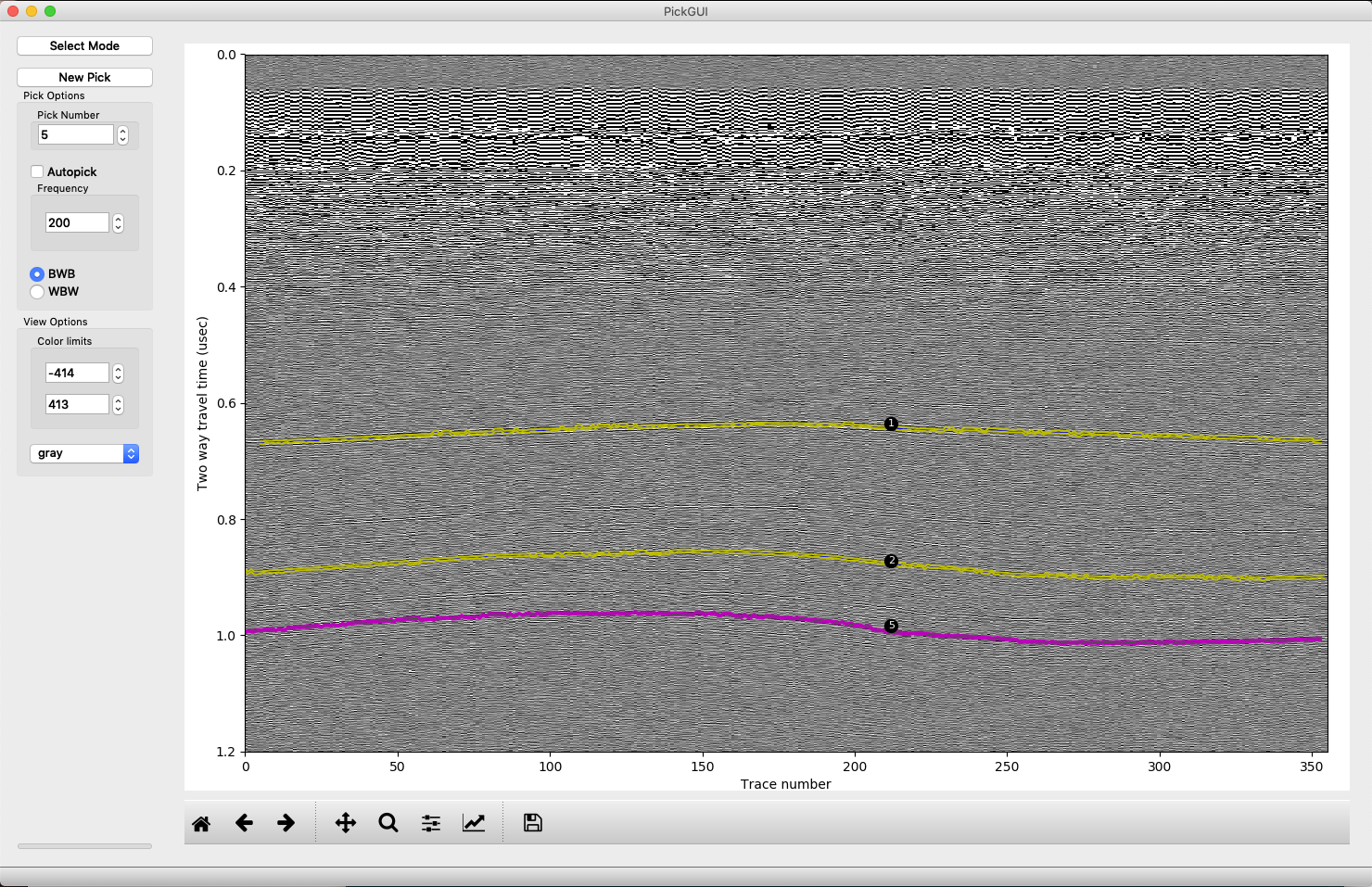
Picking¶
To begin picking, make sure you are in “edit” mode and that neither pan nor zoom is selected. If there are already some picks on the profile, you first will want to create a new pick. Picking a section must be done from left to right. You can skip portions by “NaN picking”, then continue to the right and go back and fill in gaps later to fill in gaps. To pick, start with a left click on the layer at the left edge of the profile. After you click a second time, you should start to see the layer plotted. You should not try to pick too far away–ImpDAR will search for a reflection with the desired polarity within a certain distance, determined by the frequency, of the line connecting your clicks. If you try to make it pick through too much variability, it can miss peaks and troughs.
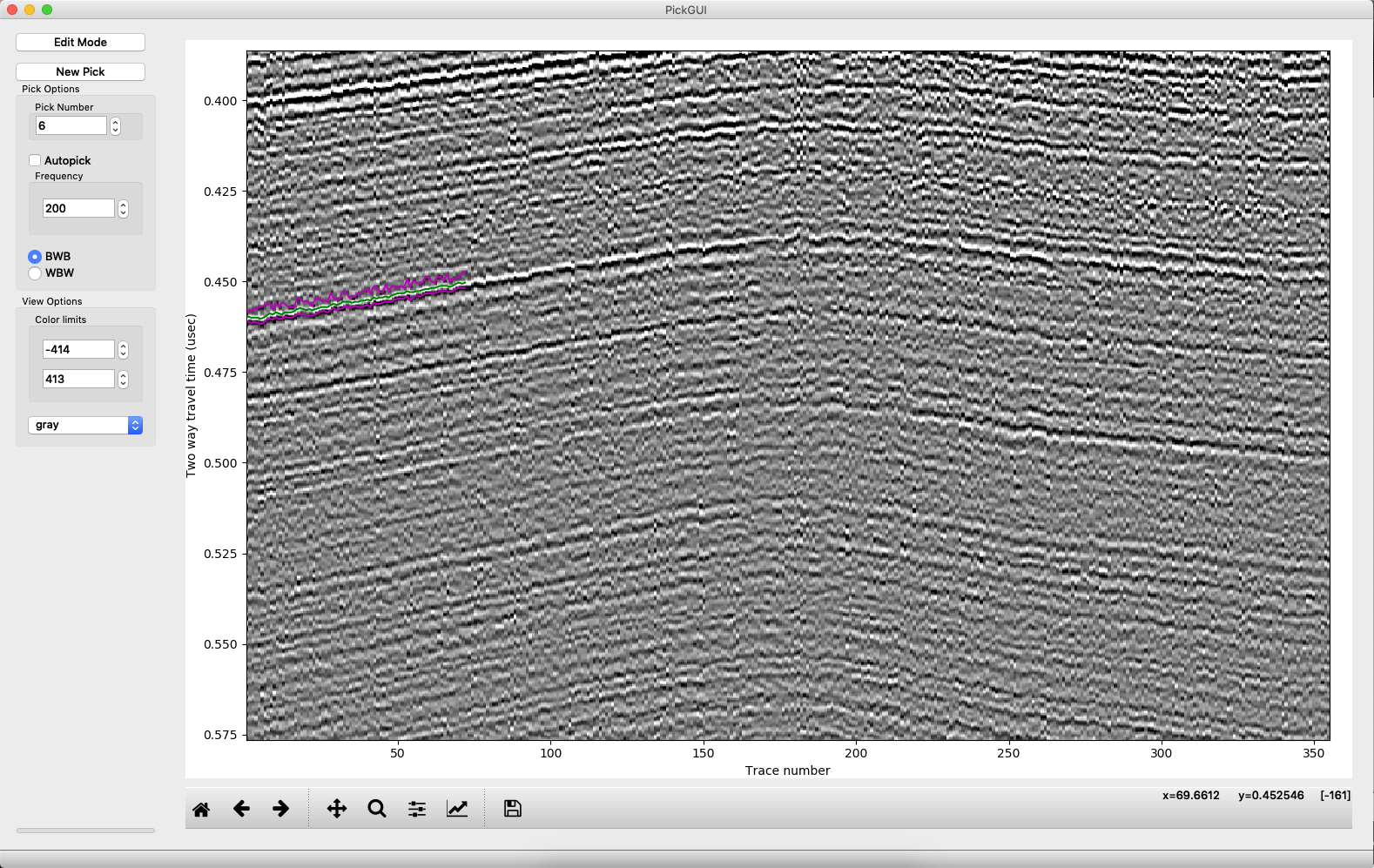
Now, let’s say you come to a portion of the profile that you feel is ambiguous and you want to skip it. Pick up to the left side of it, then click on the right side while holding down “n”. Continue clicking to the right as normal, and you will see that the portion left of where you clicked with “n”, i.e. where you NaN picked, is blank.
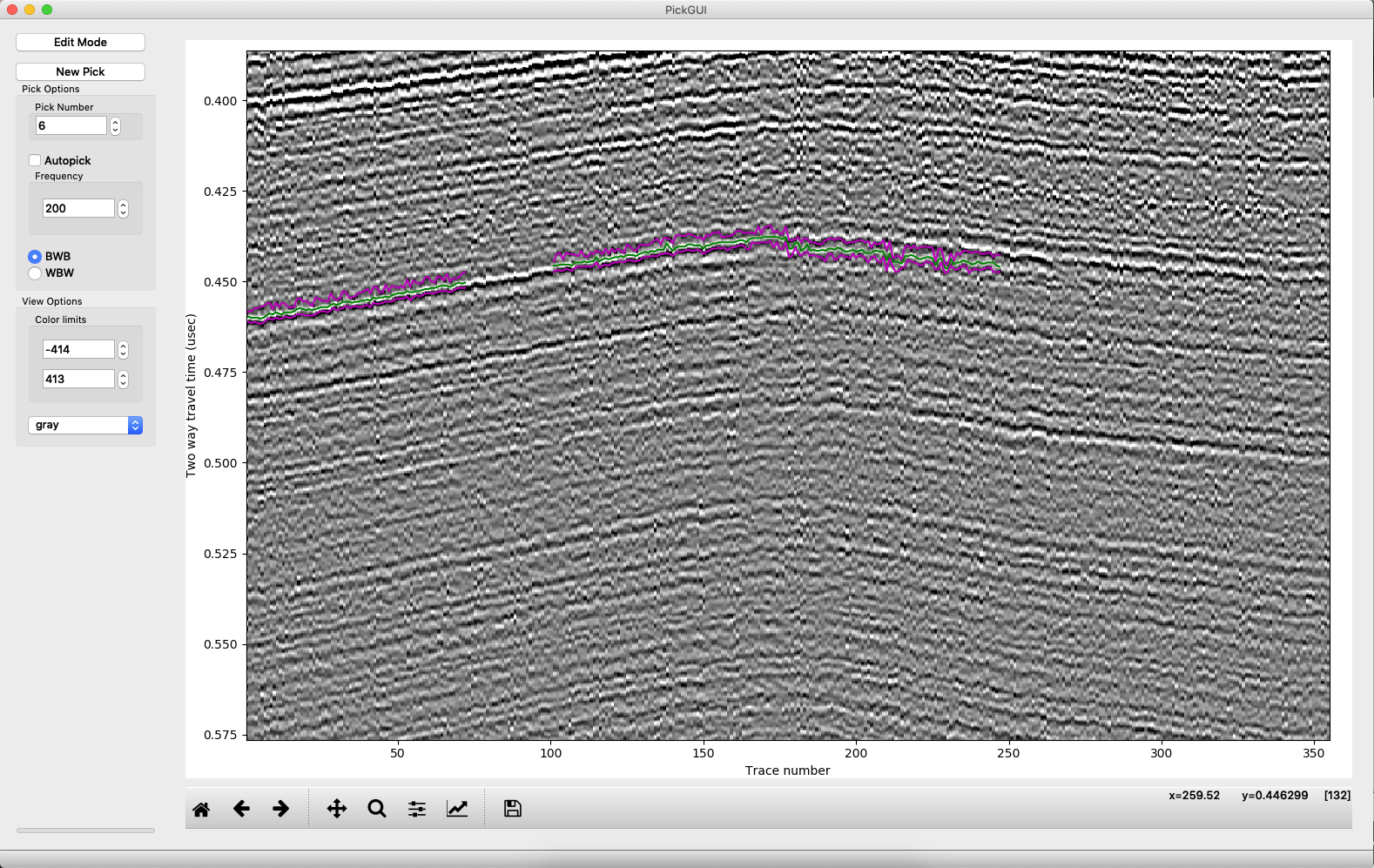
Now suppose you screwed up, like in the image above where it looks like you stepped down to a deeper layer by mistake, so now you want to backtrack. Right clicking will delete all picks left of the last click (generally the right end of the profile) and right of the right click.
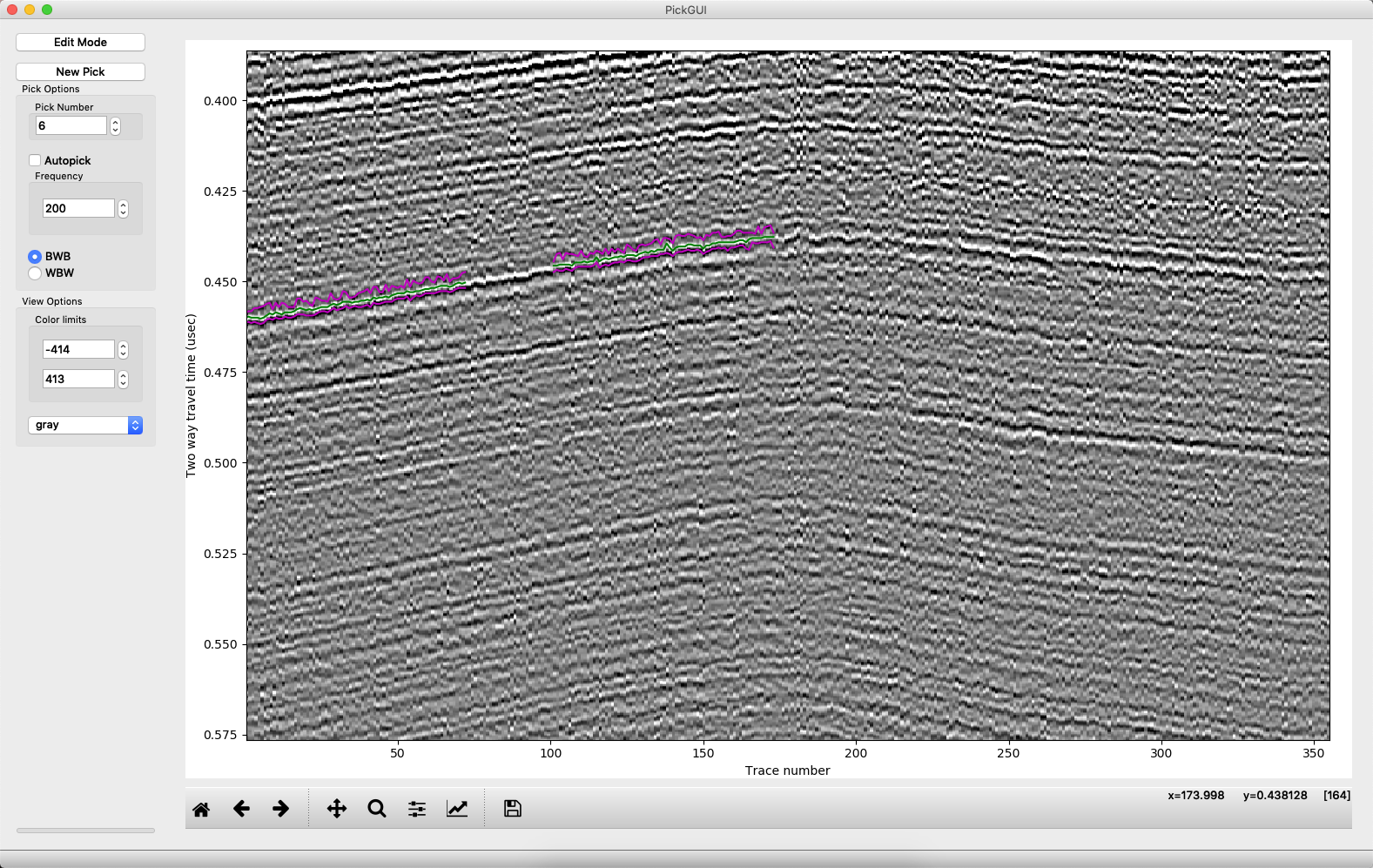
We can also go back and edit a previous pick, moving it up, say. We can also delete picks in the middle of a profile by left clicking at the right edge of the span we are deleting, then right click at the left edge.
Saving¶
After picking, you need to save your picks. When you close the window, you will be prompted to save. You can also save at any time through the file menu in the upper left. If you just want to save an image of the figure, you can use the disk icon in the matplotlib toolbar or you can use the file > save figure from the menus. You can also export the picks as a csv file (no gdal required) or as a shapefile (needs gdal) from the pick > export menu.
